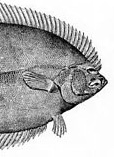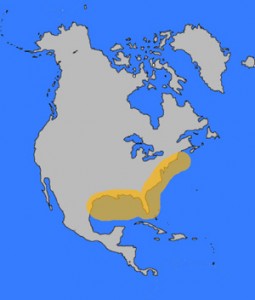Fun Facts about Flounder Fishing
If you have ever caught a flounder you would know that they have a funny face. This is because they have two eyes located on one side of their body. When they are born they actually have an eye on each side, but as they mature they go through a metamorphosis which changes the location of their eye to one side of their bodies. This is extremely important for the flounder as this is essential for allowing them to spot their prey when they are lying flat on the sea floor.
They also are similar to that of chameleons where they can change their color to blend in with the sea floor. This is helpful for them as this allows them to avoid predators and sneak up on their prey. They can actually turn all shades of color often with spots or patterns to exactly match the bottom that they are currently residing on. It is truly amazing to witness.
Flounder lie in wait for long periods of time on the sea floor. The sometimes can wait as long as a few hours without movement waiting for an unsuspecting minnow or alewife to swim in front of them. Once their prey has been spotted they will strike with incredible speed and create a vacuum to suck in their victim. It all happens in a blink of an eye. They generally feed on crustaceans and small fish that are currently residing on the sea floor. They are travelers as well often times feeding on the scraps from feeding fish located above.
Flounder can grow as large as two feet long, while Fluke thier relative can grow even larger. They are in the same family as the Halibut as well with can grow as long as 8 feet long.
Many anglers in the Gulf of Mexico are currently very concerns with the livelihood of flounder as it has been reported that much of the oil remaining is settling to the sea floor where the flounder spend most of their lives.
Where to find Flounder
Generally flounder can be found on sandy bottom areas in depths of 15 to 50 feet of water. They are a migratory fish so depending upon the time of the season their exact locations vary. When the water temperatures rise above 58 degrees the fishing action generally starts to heat up, but it varies from year to year. They can be caught in both open ocean and within bays and inlets. Flounder and Fluke will actively pursue bait-fish, so if you can locate bait-fish on your depth-finder it may be a good location to try.
When I am on the persuit of Fluke or Flounder I generally just look for all of the other boats that appear to be fluke fishing near the location I want to fish. That is always a tell tale sign that the fish are around.
There geographic location ranges from Maine to Florida. Wherever their is sandy bottom or areas with much aquarius life you are bound to find some flounder or fluke.
How to Catch Flounder
Flounder can be caught using a variety of techniques. One very popular technique is to use a “Buck-tail” jig baited with a piece of squid or other fish meat. You can attach
the Buck-tail to the end of your line with a clinch knot, bait it with squid and allow it to drop down the the bottom. If you are not sure if it has hit the bottom of the sea floor use a larger jig until you are certain that it hits the bottom. Bounce it off the bottom while drifting at a fairly slow drift. Some anglers use a “Sea Anchor” to slow their drift down to a crawl. The speed of the drift plays a large factor in how the performance of the day will be.
Their are other Flounder and Fluke jigs that you can use, but I have had the most luck with the Buck-tail Jig. You can always just use the classic hook and clam-worm as I have landed many flounder this way as well. I think the bright colors of the jig you use will definitely increase your odds however.
When is a Good Time to Catch Flounder
Generally in the North East June through September are good times to catch Flounder and Fluke. Further south the season runs longer as long as the water temperature stays above 58 degrees. I have the most luck fishing from 10:00 to 3:00 on any day. I think the bright sun helps them to find their prey. Whenever their is decent bait-fish in the area I can generally find the Fluke lying below waiting for a free meal.
What the Fluke do I know?
I once had an argument with a friend of mine indicating that the Buck-tail jig was the best jig to use to catch fluke. He had a custom fluke rig baited with squid and smelt. We had a “fish off” and he landed twice the fish that I did that day. It just goes to show you that it is always a good idea to experiment with different Jigs and don’t fall in love with one over the other as the fish you are after may have a preference on a particular day.



